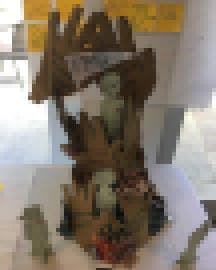During the last few weeks of summer as children cool off in lakes, pools, hydrants and beaches, some of our nation’s top teachers have been upping their game in preparation for this year’s students.
Teacher-led conferences are popping up nationwide, cultivating communities of practice where educators share their best practices, celebrate their work and prepare to innovate on instruction for the upcoming school year. What’s more, this models is scalable to schools nationwide, opening the floodgates for conversations around innovation and professional collaboration.
But these conferences are not like an edcamp or an unstructured unconference of the kind you may have heard of. This one focuses on getting educators to define some of their biggest challenges and then work together to figure out solutions in a workshop format that draws heavily from the world of design thinking.

Circular Logic
In my work with teachers nationwide I’ve learned about a revolutionary approach to PD called Elevating & Celebrating Effective Teaching and Teachers (ECET2), and the dynamic work of one teacher educator who has brought this conference to life in her home state of Maine. Teacher leader and Maine Science Teacher Association President Diana Allen co-facilitated the Maine ECET2 conference (pronounced E-set-two) this August hosting 157 educators from more than 30 different districts. To deepen the impact of the talks, workshops and breakouts presented at the conference, Allen trained a cohort of teacher leaders in the months leading up to the conference so they might facilitate the conference’s hallmark component: colleague circles.
Each colleague circle is comprised of no more than a dozen attendees, placed together by chance, who meet several times throughout the two-day conference to design a solution for a shared concern, such as how to inject more teacher voice into schools.
Teacher leaders scaffold this work using a protocol that mirrors the first few phases of design thinking, which includes identifying a problem, empathizing with the user and ideating potential design solutions. Attendees begin with a dream and gripe session where they share both goals and obstacles from the classroom to spark the design thinking process, where they work collaboratively to identify shared concerns across their classrooms and communities and then brainstorm and prototype solutions.
“Not only are we cultivating solutions to teacher-identified problems, we’re creating a collegiate group through these circles where teachers connect across schools and content areas to find shared needs and collaborate to find solutions,” says Allen, about her work to empower teacher leaders to creatively design ways to grow from their identified pain points.
During the event teachers discovered many common threads among their challenges—from not having enough time to collaborate with colleagues to the missing voice of teachers in educational decision making. Teachers worked to identify a single problem they would address together and began to unpack every aspect of the problem. For the group who identified lack of time for teacher collaboration, a brainstorming session made clear that the real issue was around empowering teacher voice. As brainstorming continued so too did the sense of empathy for the many educators whose innovative work was found piecemeal throughout the state yet not communicated broadly within the education community.
One potential fix? A new network of educator-innovators where schools would share responsibility between staff and administration in curriculum design and implementation, ultimately giving a greater voice to teachers. “It was incredibly exciting to see how groups of educators receiving the exact same materials were able to make completely distinct design solutions,” says Allen. “A barter system came to life amongst teachers who modeled the skills of collaboration, communication and problem solving that we are so deeply vested in developing in our students.”
Raised Voices
At the end of the two days, teacher educators emerged with work products that iterated on feedback from peers and demonstrated their dedication to excellence and innovation. Those solutions were then shared at a gallery walk for all to see.
One circle showcased a visual layout for a proposed website for aggregating resources for various educational stakeholders. The group focusing on raising teacher voice created a representation of many hands lifting learners to their greatest potential. The goal of this particular colleague circle perfectly mirrored the overarching goal of this year’s ECET2: that raising teacher voice in educational decision making has the potential to transform our shared futures.

As the familiar yellow buses return to our streets this fall, the ECET2 model of professional collaboration serves as a beacon of hope and opportunity for continued growth and development. I’m left wondering: how can we use this model nationwide to raise teacher and student voice to solve the problems in our schools? Can we leverage technology to connect across state lines and learn from each other’s experiences? And how can we celebrate the educators who continue to share their practices and collaborate with others to grow and improve classrooms nationwide?
It is my hope that leveraging technology to connect educators across the globe we can use models of PD from conferences like ECET2 to help raise student and teacher voice year-round and provide ongoing support, learning and innovation nationwide.


